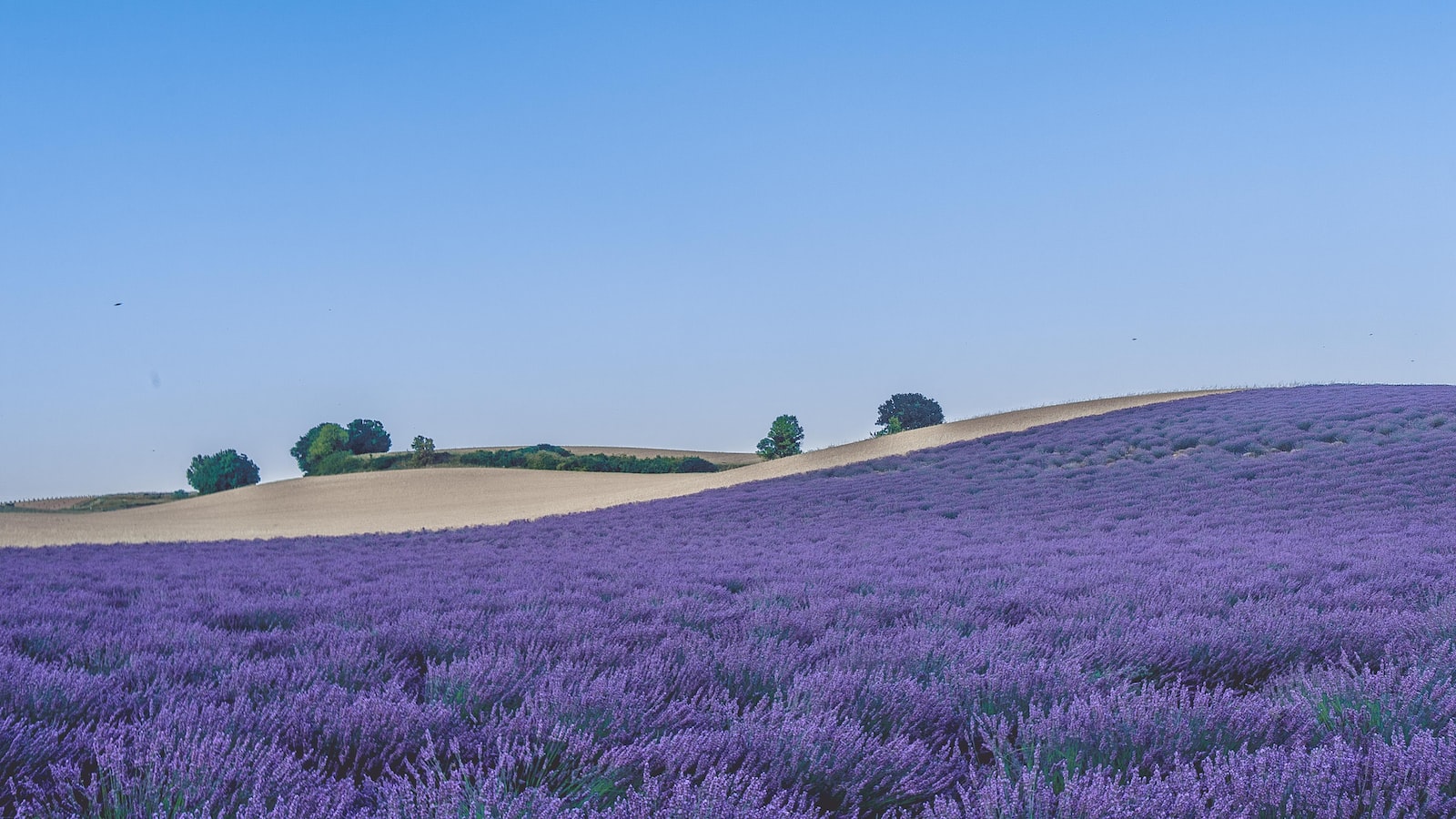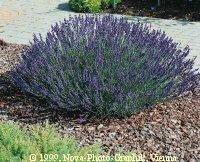The majestic terrains of Colorado, adorned with rugged mountains and stunning wildflowers, evoke an undeniable allure for those seeking tranquility and natural beauty. Amidst this breathtaking backdrop, one plant stands tall as a symbol of serenity and grace – lavender. Known for its enchanting aroma and delicate purple blossoms, lavender has captivated gardeners and nature enthusiasts across the globe. But as with any botanical endeavor, timing is key. So, if you find yourself wondering when to plant this fragrant marvel in the picturesque plains of Colorado, worry not, for we have journeyed through the realm of gardening wisdom to unveil the perfect moment to watch your lavender seeds bloom in this resplendent state. Join us as we navigate the intricacies of lavender cultivation, synchronizing nature’s rhythm with our eager horticultural aspirations. Prepare to embark on a harmonious odyssey, where Colorado’s striking landscapes and the aromatic allure of lavender blend effortlessly to create a tapestry of pure botanical bliss.
Best Time to Plant Lavender in Colorado
When it comes to planting lavender in Colorado, timing is crucial for ensuring successful growth and vibrant blooms. Lavender thrives in sunny, dry climates with well-draining soil, making Colorado’s arid climate an ideal environment. The is in the spring, typically between late April and early June, when the soil begins to warm up and frost is no longer a concern. Planting during this period allows the lavender to establish its roots before the scorching summer heat sets in.
If you’re a lavender enthusiast in Colorado, here are some key features and tips to keep in mind for achieving flourishing lavender plants:
| Features | Tips |
|---|---|
| Resilient and drought-tolerant | Ensure well-draining soil for optimal growth |
| Fragrant and culinary uses | Harvest lavender flowers when fully budded for intense fragrance |
| Attracts pollinators | Include native plants nearby to promote pollination |
Lavender varieties that are well-suited for Colorado include English lavender (Lavandula angustifolia), Spanish lavender (Lavandula stoechas), and lavandin (Lavandula x intermedia). These varieties exhibit different growth habits and flower shapes, allowing you to choose the one that suits your aesthetic preferences.
Remember to provide your lavender plants with ample sunlight, at least 6-8 hours per day, and space them appropriately to allow for air circulation. Lavender also benefits from regular pruning, which helps maintain a compact form and encourages more prolific blooming. By following these guidelines and selecting the right time for planting, you’ll be on your way to growing thriving lavender plants that add beauty, fragrance, and charm to your Colorado garden.

Ideal Weather Conditions for Planting Lavender in Colorado
Colorado is renowned for its picturesque landscapes and diverse climate, making it an ideal location for cultivating lavender. However, to ensure successful growth and thriving plants, it is crucial to understand the ideal weather conditions for planting lavender in this enchanting state.
Lavender thrives best in Colorado when planted during the spring or early fall seasons. These periods provide the optimal combination of mild temperatures and sufficient rain for the plants to establish themselves. It is important to avoid planting lavender during the harsh winter months or scorching summer heat to prevent damage or stunted growth.
Features and Tips for Planting Lavender in Colorado:
| Feature/Tips | Description |
|---|---|
| Well-drained soil | Lavender prefers sandy, loamy soil that drains well, preventing excess moisture that can cause root rot. |
| Full sun exposure | Lavender thrives under direct sunlight for at least 6 to 8 hours a day, allowing it to grow vigorously and produce abundant blooms. |
| Proper spacing | Ensure ample space between lavender plants, usually around 24 to 36 inches, to promote air circulation and prevent the spread of diseases. |
To guarantee successful lavender growth in Colorado, remember to provide adequate water, ensuring the soil remains moist but not overly saturated. Additionally, regular pruning and removing faded flowers will prolong the blooming period and encourage continuous plant vitality. By following these tips and embracing the optimal weather conditions, you’ll create a lavender haven in your Colorado garden that exudes beauty, fragrance, and serenity.

Recommended Lavender Varieties for Colorado Gardens
Lavender, with its pleasant fragrance and beautiful purple flowers, makes a stunning addition to any garden in Colorado. However, not all lavender varieties thrive in Colorado’s unique climate and conditions. To help you choose the perfect lavender varieties for your Colorado garden, here are some recommendations and tips to consider:
- English Lavender (Lavandula angustifolia): This classic variety is a favorite among gardeners due to its strong fragrance and compact size. It can tolerate Colorado’s cold winters and hot summers, making it an ideal choice for your garden. Features: dense foliage, aromatic flowers, suitable for containers, attracts pollinators.
- Lavandin (Lavandula x intermedia): A hybrid variety known for its larger blooms and higher oil content, lavandin is a hardy choice for Colorado gardens. It thrives in full sun and well-draining soil, tolerating the state’s temperature fluctuations. Features: tall and bushy growth, long blooming season, used for essential oil production, drought-tolerant.
For successful lavender cultivation in Colorado, here are some general tips to keep in mind:
- Plant lavender in well-draining soil to prevent root rot. Add organic matter like compost to improve drainage.
- Select a sunny location for your lavender plants, as they require at least 6-8 hours of direct sunlight daily.
- Water your lavender sparingly, as they prefer drier conditions. Aim for deep watering once a week during the establishment period, and reduce frequency once established.
- Prune your lavender annually to promote bushiness and prevent woodiness. Trim back around one-third of the plant’s height in early spring.
- Mulch around the base of your lavender plants to regulate soil temperature and suppress weed growth.
Table:
| Variety | Features |
|---|---|
| English Lavender | – Dense foliage – Aromatic flowers – Suitable for containers – Attracts pollinators |
| Lavandin | – Tall and bushy growth – Long blooming season – Used for essential oil production – Drought-tolerant |
With the right choice of lavender varieties and proper care, you can add a touch of beauty and fragrance to your Colorado garden. Enjoy the calming presence and vibrant colors these lavender plants bring to your outdoor sanctuary!
Tips for Planting and Caring for Lavender in Colorado
With its vibrant purple blooms and soothing fragrance, lavender is a delightful addition to any garden. If you are a Colorado gardener looking to cultivate this lovely herb, it’s important to choose the right time for planting. In Colorado, the best time to plant lavender is in the spring, once the last frost has passed. Lavender thrives in well-drained soil with plenty of sunlight, making it an ideal choice for Colorado’s arid climate. When planting, be sure to space the lavender plants about two to three feet apart to allow for proper air circulation and prevent diseases.
Once your lavender is planted, caring for it properly will ensure its health and vitality. Here are a few essential tips to help you successfully nurture your lavender plants:
| 1 | Choose the right variety of lavender, such as English lavender (Lavandula angustifolia) or Provence lavender (Lavandula x intermedia), which are well-suited for Colorado’s climate. |
| 2 | Water your lavender plants deeply once or twice a week, allowing the soil to dry out between watering. Avoid overwatering, as lavender prefers slightly dry conditions. |
| 3 | Prune your lavender plants regularly to promote vigorous growth and prevent leggy or woody stems. Pruning should be done in the spring, just as new growth begins. |
By following these tips, you can create a thriving lavender garden in the enchanting state of Colorado. Enjoy the beauty and fragrance of this versatile herb while adding a touch of serenity to your outdoor space.
Frequently Asked Questions
Q: When does the magical journey of growing lavender begin in Colorado?
A: The enchanting adventure of planting lavender in Colorado starts in early spring.
Q: What celestial signs should I look for before embarking on the lavender planting quest in Colorado?
A: Keep an eye out for the disappearance of the last snowflakes and the arrival of gentle breezes to signify the perfect time to plant lavender in Colorado.
Q: Are there any secrets to ensure a thriving lavender kingdom in the land of Colorado?
A: To create a flourishing lavender kingdom, remember to choose a sunny kingdom with well-draining soil and bestow your delicate plants with love and plenty of water while establishing their reign. As your lavender journey comes to a close, we hope we’ve shed some light on the perfect timing for planting this fragrant herb in Colorado’s rocky soil. While the unique climate of the Centennial State may present its challenges, the allure of vibrant lavender blossoms dancing in the mountain breeze is undeniably tempting.
The setting sun casts a warm glow over the peaks, as you contemplate the precise moment to embark on your lavender adventure. With its unwavering spirit and hardy nature, this resilient herb thrives in Colorado’s unpredictable climate, proving that beauty can indeed spring forth from the most unlikely of places.
As you dig your hands into the earth, feel the soil between your fingers, and hold the delicate lavender seedling in your palms, you become part of a legacy. A legacy that weaves together the wisdom of the land with the dreams of lavender enthusiasts like yourself, creating a tapestry of color and aroma unique to this place we call home.
In the realm of lavender, timing is everything. So, as you bid farewell to these pages, remember that patience and precision will guide your journey. Though there may be twists and turns along the way, the interplay of Colorado’s harsh winters and scorching summers will shape your lavender plants into exquisite works of art, defying all odds.
As you stand amidst your lavender garden, the fragrance engulfing the air, your heart will be filled with a sense of accomplishment—a testament to your unwavering dedication. With each passing season, your lavender plants will bloom in vibrant shades of purple, attracting visitors from near and far, inviting them to lose themselves in the serenity that your garden effortlessly provides.
So, fellow lavender enthusiasts, let the winds of Colorado whisper their secrets. Let the warmth of the sun kiss your lavender buds, welcoming them to put down roots and paint the world vivid shades of lavender. For in this intricate dance between nature and passion, a symphony of brilliance emerges, captivating all who dare to dream.
Embrace the challenge, trust in the timing, and in due course, your lavender sanctuary will flourish. The delicate fragrance that wafts through your garden will serve as a reminder of the harmony between nature and the human spirit, an homage to the resilience of this captivating herb.
And so, as we bid you adieu, dear reader, we leave you with a final invitation: Let your love for lavender take root, let your hands cultivate beauty, and watch as the vibrant lavender blossoms paint the Colorado landscape with their magical hues.
- When to Put Weed and Feed on Lawn in Michigan - October 16, 2023
- When to Fertilize Potatoes Plants - October 16, 2023
- Can You Plant Clover in the Spring - October 16, 2023

